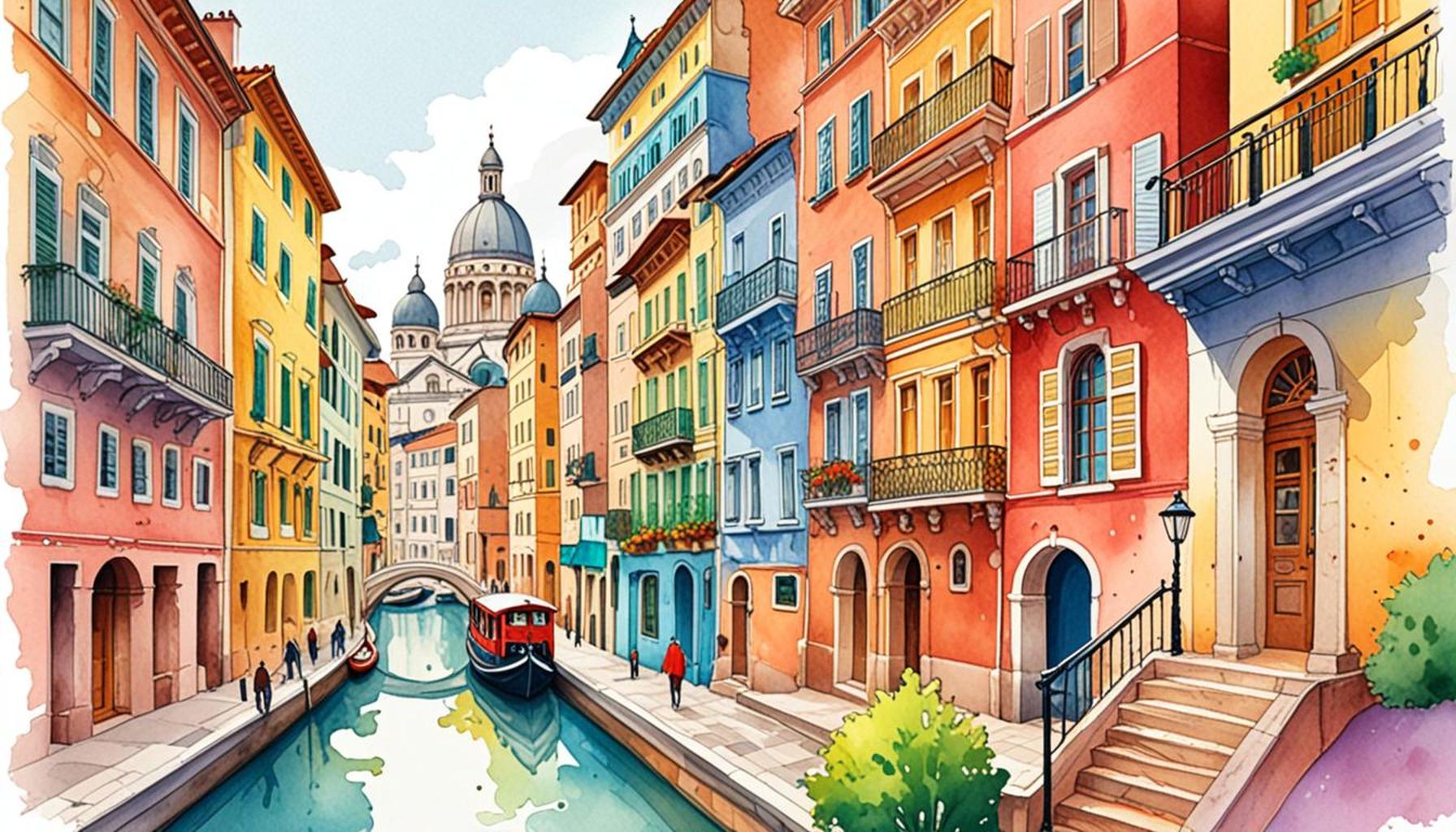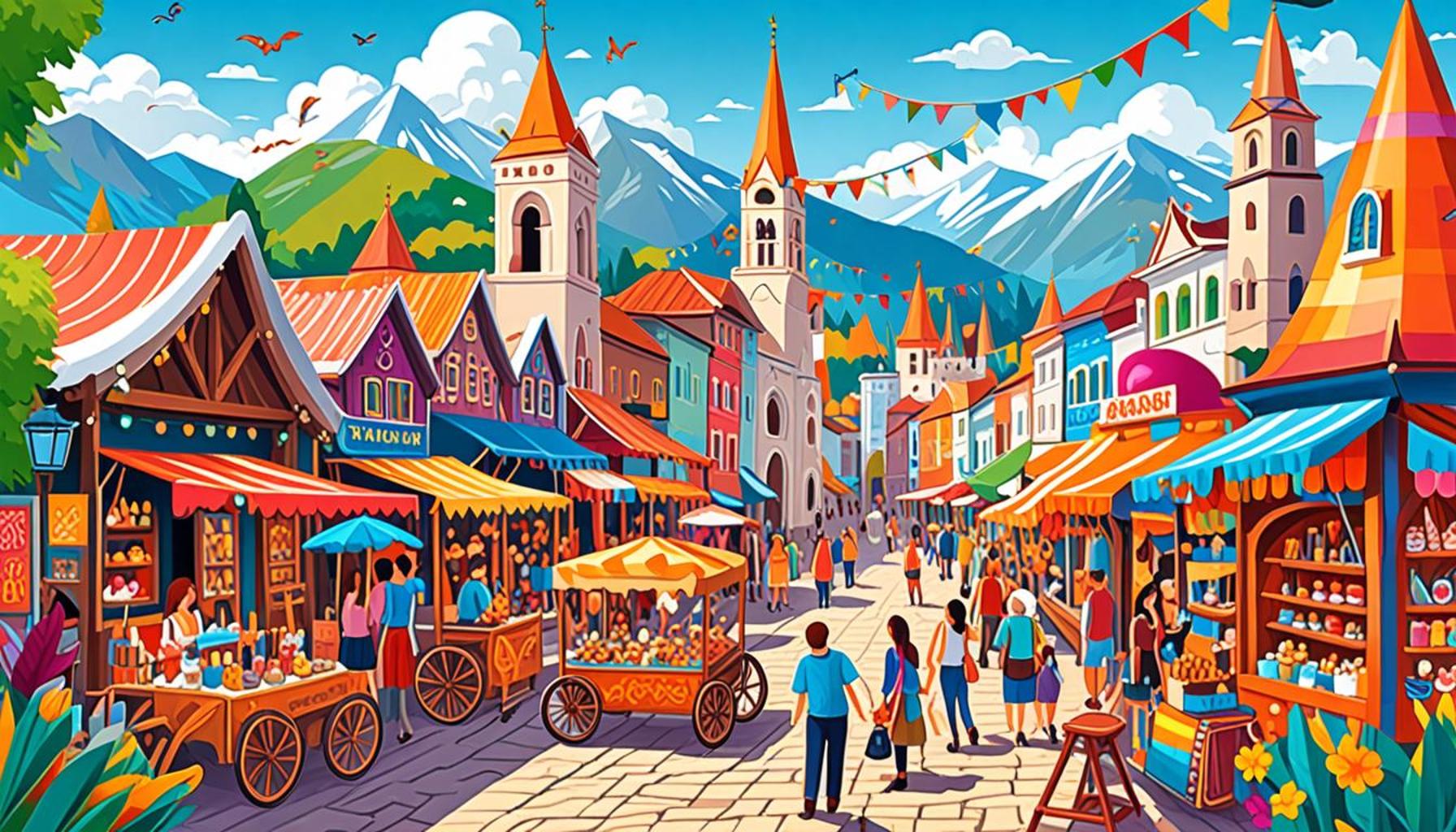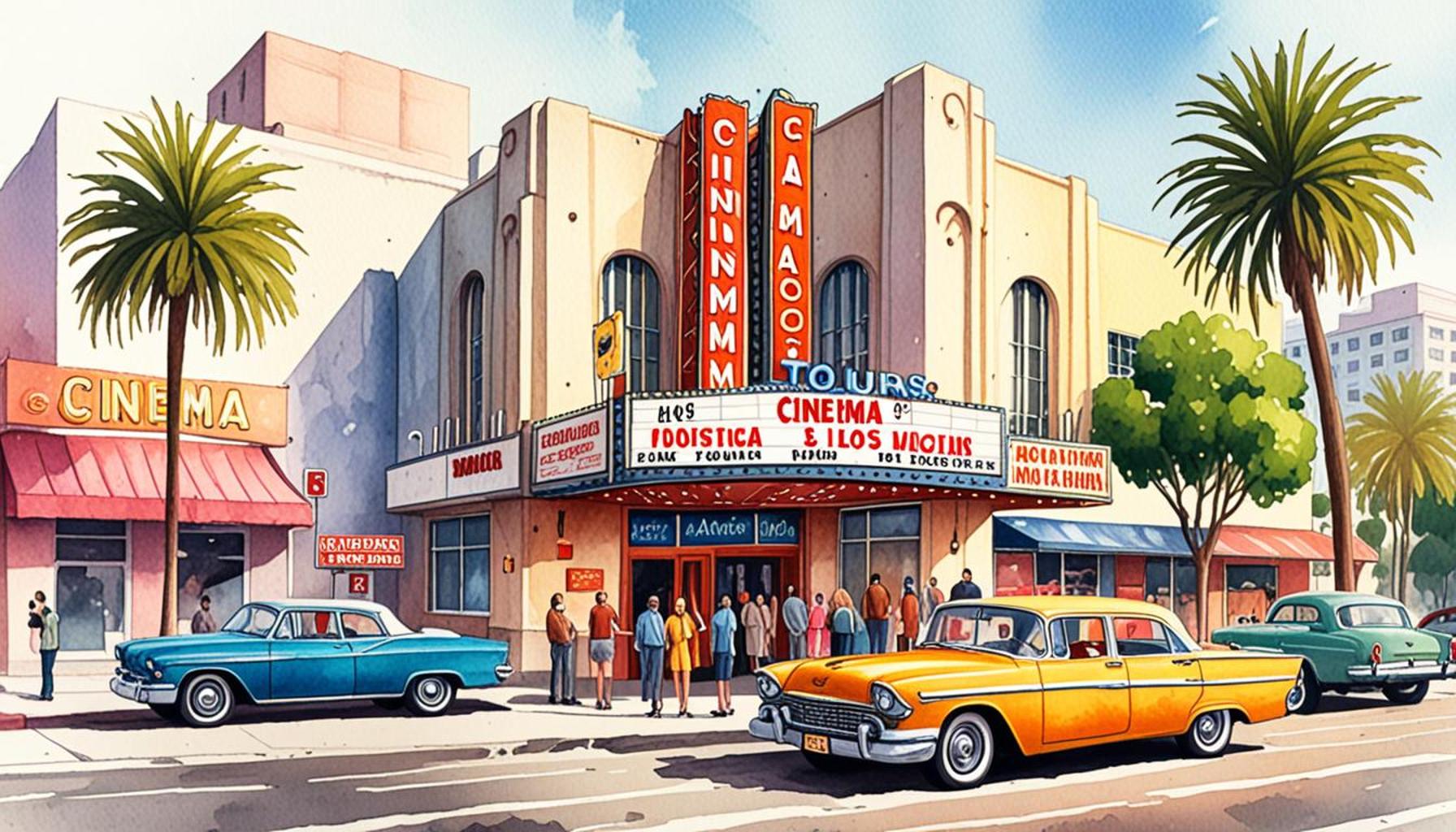Paths of Heritage: Itineraries that Unveil the Architecture and Cultural History of Iconic Cities

The Tapestry of Human History in Urban Spaces
Traveling through iconic cities is more than just a sightseeing affair; it is an immersive journey into the tapestry of human history. Each street, building, and landmark tells a story, revealing layers of architecture and culture that define its essence. Cities serve as living museums, and their architectural marvels narrate the evolution of society, art, and technology. From towering skyscrapers to quaint historical neighborhoods, each structure contributes to the unique character that defines its locale.
Take, for example, the following cities:
- New York City: The Woolworth Building, completed in 1913, stands as a symbol of Gothic Revival architecture with its intricate detailing and soaring height. Often referred to as the “Cathedral of Commerce,” this iconic structure not only showcases engineering ingenuity but also represents the American dream and ambition of the early 20th century. Its ornate terra cotta exterior captures the imagination of visitors, reflecting the heights of prosperity during its construction.
- San Francisco: The Painted Ladies, a row of Victorian houses near Alamo Square, epitomize the city’s architectural diversity. These colorful homes, dating back to the late 19th century, are not just visually striking; they represent a significant cultural moment during the Gold Rush era when prosperity fueled creative expression in architecture. Their historical significance is enhanced by the vibrant backdrop of the San Francisco skyline, often seen in movies and media, which invites exploration of themes around gentrification and preservation.
- Chicago: The Chicago School of Architecture marked a pivotal shift in design with innovations like steel-frame construction and large plate glass windows, dramatically altering the urban landscape. Iconic buildings like the Sears Tower (now Known as the Willis Tower) highlight this advancement and signal the city’s role as a hub of architectural experimentation. Chicago’s skyline, formed through relentless drive for progress, offers visitors not just views, but stories of resilience and rebirth after events such as the Great Fire of 1871.
- New Orleans: A stroll through the French Quarter immerses visitors in a vibrant blend of French, Spanish, and Creole influences, reflecting the city’s rich history of multiculturalism. The architecture ranges from the wrought iron balconies of the historic homes to the lively colors of the buildings that house jazz clubs and cafes. Each corner of the Quarter is steeped in tales of Mardi Gras and the legacy of voodoo, echoing the voices of diverse communities that have shaped the city’s identity.
These urban trails not only showcase architectural wonders but also reflect the cultural evolution and identity of their inhabitants. By wandering through these paths, you’ll gain a deeper appreciation for the cities you visit, unlocking an understanding of the cultures that influenced their development. Each architectural wonder is a testament to the narrative of its people, preserving memories of triumph, struggle, and artistic expression.
As we delve into these itineraries, you will find that each journey reveals not only stunning visual stories but also highlights the interconnectedness of heritage, art, and society. Whether you are an avid traveler or a curious local, exploring the architectural landscape of these cities opens the door to engaging with their histories. Join us in this exploration of heritage paths that unveil the architecture and cultural narratives of some of the world’s most iconic cities, fueling your curiosity and desire to learn more about the remarkable stories they hold.
EXPLORE MORE: Click here to uncover amazing family vacation ideas
![]()
Exploring Pathways of Architectural Significance
Delving into the architecture of iconic cities is akin to peeling back the layers of time, revealing how civilizations have expressed their identity through constructed spaces. Each building stands as a monument to innovation, housing stories of the past while actively shaping the cultural landscape of today. By traversing these urban environments, one can trace the rich tapestry of influences—historical, economic, and social—that have contributed to their architectural evolution. Whether it is the grandeur of a cathedral or the charming simplicity of a neighborhood, every structure contributes vital threads to the narrative of human achievement.
Uniquely designed pathways through cities are not merely routes from one landmark to another; they are thoughtfully curated experiences meant to educate and inspire. These itineraries often include:
- Historical Landmarks: Structures that have withstood the test of time, such as the Liberty Bell in Philadelphia or the Golden Gate Bridge in San Francisco, embody the spirit of their respective eras. They serve as beacons of national pride and community identity.
- Parks and Public Spaces: Locations like Central Park in New York or the Millennium Park in Chicago provide not only aesthetic pleasure but also social gathering spaces integral to city life. These parks promote cultural events that engage the community, highlighting the interplay between nature and urban development.
- Art Installations: Public art, whether it’s murals in Philadelphia’s Fishtown or sculptures in Chicago’s Grant Park, contributes to the architectural dialogue, pushing the boundaries of what defines a city’s aesthetic.
- Cultural Institutions: Museums, such as the Smithsonian in Washington, D.C., or the Getty Center in Los Angeles, play a pivotal role in preserving history. They offer visitors a chance to engage with artifacts and exhibits that help contextualize the architecture surrounding them.
Moreover, the itineraries reveal how architecture mirrors the social fabric of its city. In places like New Orleans, distinguishing architectural styles such as Creole cottages and Spanish townhouses narrate the unique interaction of different cultures. Here, a walk through the streets is a journey through cultural exchange—each corner presenting a blend of history that extends beyond the buildings themselves to encompass the traditions and lifestyles of those who lived in them.
A further understanding of the significance of architectural diversity can be witnessed in cities with robust immigrant communities, where neighborhoods reflect a medley of global influences. From the vibrant streets of immigrant enclaves to the elaborate religious structures symbolizing diverse faiths, architecture serves as a powerful visual representation of the city’s evolving identity.
As you embark on these heritage paths, you’re not merely a passive observer; you become a participant in a dialogue between history and modernity. The buildings, streetscapes, and monuments beckon, inviting you to reflect on the stories behind their façades. Every itinerary not only showcases exquisite architecture but also whispers tales that shaped the cultural heritage of their cities—each a piece in the larger puzzle of human experience.
| Advantage | Description |
|---|---|
| Cultural Immersion | Engage in the rich tapestry of local history and traditions, experiencing the authentic essence of each city. |
| Architectural Wonders | Marvel at iconic structures that illustrate the evolution of architectural styles through different eras. |
| Educational Insights | Gain deep knowledge about significant landmarks, from ancient ruins to modern monuments, through guided tours or well-curated information. |
| Community Engagement | Support local economies by engaging with artisans, shops, and eateries that reflect the heritage of the area. |
The itineraries offered through the “Paths of Heritage” program not only educate but also inspire wanderlust, drawing travelers into journeys that celebrate the unique stories embedded within each city’s fabric. With the allure of architectural masterpieces juxtaposed against the backdrop of enlightening historical narratives, adventurers have the chance to uncover layers of culture that might otherwise remain hidden.Emphasizing the combination of history, art, and social context, these paths are crafted to elevate appreciation for cities by focusing on the delicate interplay of their cultural identities. Each visit becomes a profound act of understanding rather than mere sightseeing, pushing travelers to reflect on the many cultural dimensions that shape their environment. By diving deeper into the past, visitors walk away transformed, equipped with knowledge that resonates far beyond their travel experience.
DISCOVER MORE: Click here for luxurious getaway ideas
Unearthing Urban Stories: The Influence of Architecture on Community Identity
The links between architecture and community identity cannot be overstated. As cities evolve, so do the stories encapsulated within their buildings, often revealing socio-political landscapes and cultural shifts. By following dedicated heritage pathways, one can absorb the contexts in which architectural forms arise and transform. Take for instance the iconic skyline of Chicago, characterized by its historic skyscrapers which tell a tale of ambition and reinvention in the early 20th century. On this journey, buildings like the Willis Tower and the Art Deco Prudential Building whisper of an era fueled by industry and innovation.
The notion of architectural preservation is critical in maintaining these stories. As neighborhoods gentrify and new developments emerge, the tension between modernity and heritage often comes to the forefront. Cities like Boston grapple with preserving their colonial history while accommodating new constructions. The Freedom Trail, a 2.5-mile route through the heart of Boston’s historic district, showcases how preserving the architectural narrative can enhance community engagement, create tourism opportunities, and enrich the regional identity. Each stop along the trail, from the Massachusetts State House to Paul Revere’s House, plays a role in illustrating the city’s revolutionary past.
Moreover, the preservation efforts in historic districts often encourage community involvement—a narrative co-created by residents and local advocates. The Historic District of Savannah, Georgia, with its cobblestone streets and antebellum architecture, stands as a testament to civic pride and environmental stewardship. Visitors walking through the district will find themselves nestled in stories of resilience against destruction during the Civil War and the significance of preservation movements in the 20th century. The preservation of local architecture not only maintains the physical spaces but also nurtures the cultural practices and traditions that enrich community life.
Artisanship and craftsmanship present another layer worth exploring within these itineraries. The intricate details found in the work of local artisans, from iron wrought gates in New Orleans to the decorative tile work of San Francisco’s Painted Ladies, denote a commitment to skill and artistry that has often been passed down through generations. Engaging with this craftsmen culture fosters a deeper connection between citizens and their surroundings, as well as supporting local economies. Events like Chicago’s Open House allow the public to meet these artisans, experience demonstrations, and understand the significance of their contributions to the city’s architectural heritage.
In addition to showcasing traditional architectural examples, many cities engage in contemporary architecture that thoughtfully dialogues with historical designs. Cities such as Seattle blend the old and new seamlessly, as seen at the Museum of Pop Culture (MoPOP), designed by Frank Gehry. With its modern façade juxtaposed against a backdrop of historic structures, MoPOP sparks conversations about innovation in architecture and how presentism can pay homage to the past. This dynamic approach asks visitors to contemplate what lies ahead while respecting the stories that came before.
As heritage pathways guide you through these urban tapestries, a sense of discovery unfolds with each step. These itineraries illuminate the interplay between the built environment and the communities that inhabit them. They reveal not just physical structures, but rather the living history of neighborhoods—interwoven narratives and collective memories that define the essence of iconic cities across America.
DISCOVER MORE: Click here for essential tips on family vacations
Embarking on the Journey of Heritage
In conclusion, exploring the paths of heritage through the architectural wonders of cities unveils a rich tapestry of cultural history, community identity, and craftsmanship. Each city, from the rustic charm of Savannah to the vibrant streets of New Orleans, offers distinctive itineraries that invite us to connect with our past while contemplating our future. These heritage pathways are not mere routes; they represent narratives woven into the fabric of urban life, echoing the aspirations, struggles, and triumphs of those who have come before us.
The role of architectural preservation cannot be overstated as it protects the stories encompassed within historical buildings and fosters a sense of belonging among residents and visitors alike. As cities evolve and modernity competes with tradition, the preservation of architectural integrity remains paramount in ensuring that the essence of these iconic locales is not lost to time. Innovative projects that blend contemporary design with historical context, such as Seattle’s MoPOP, serve as reminders of the ongoing dialogue between the past and the present.
Ultimately, walking these heritage itineraries enriches our understanding of cultural dynamics and the significance of local artistry. As we navigate through the intricate details and narratives presented along the way, we become not only observers but also participants in a living history that fosters connection, understanding, and appreciation for the unique architectural identities of our cities. So, lace up your walking shoes and embark on this journey—your next adventure awaits, filled with architectural treasures and stories waiting to be uncovered.



